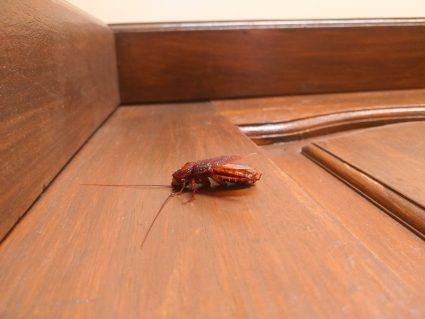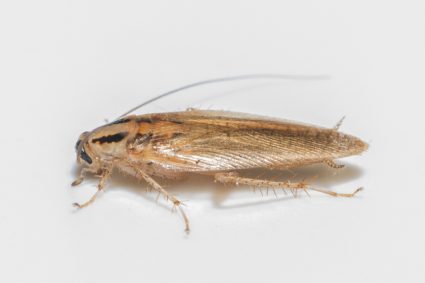
Cockroaches are among the most common household pests, but did you know that some species of cockroaches can fly? While the sight of a flying roach can be alarming, understanding what causes this behavior can help you manage and prevent infestations. In this comprehensive guide, we’ll explore what causes flying roaches, the characteristics of these insects, and how to handle or prevent infestations.
Flying roaches are usually caused by specific conditions such as high temperatures exceeding 85 degrees Fahrenheit, survival mechanisms when their habitat is disturbed or they’re threatened by predators, and the search for food when their current environment becomes unfavorable. Additionally, some nocturnal species of cockroaches are attracted to light, which may cause them to fly towards light sources.
What Are Flying Roaches?
Flying roaches are a type of cockroach that have wings and are capable of flying or gliding. Some common species of flying cockroaches include the Asian, brown, smoky brown, and wood roaches. Not all cockroach species can fly, and those that can usually do so under specific temperature and humidity conditions.
Characteristics of Flying Roaches
Here are some key characteristics of flying roaches:
- Wings: Most flying cockroach species have two pairs of wings, with the outer set acting as a protective layer and the inner set used for flying.
- Flight ability: Some species can fly short distances, while others use their wings to glide from high locations to lower ones.
- Attraction to light: Flying cockroaches are attracted to light and may infest boxes, bags, pipes, and frameworks.
- Nocturnal behavior: Most flying cockroaches are active during the night.
- Temperature sensitivity: They have an ideal temperature range between 75 and 85 degrees Fahrenheit, and they may fly if heat or cold conditions encourage it.
- Disease carriers: Flying cockroaches can transfer viruses, fungi, and bacteria to food, putting residents at risk for gastroenteritis, dysentery, and food poisoning.
- Short indoor lifespan: Flying cockroaches do not typically live for long periods indoors but can cause significant damage to homes.
What Causes Roaches to Fly?
The main factors that cause cockroaches to fly include:
- Temperature: Cockroaches are more likely to fly when temperatures exceed 85 degrees Fahrenheit. Higher temperatures cause insects to use up more energy, and in extreme heat, they usually seek out cooler spaces.
- Survival mechanism: Cockroaches capable of flying will fly as a survival mechanism when they need to escape quickly, such as when they are being chased by a predator or when their habitat has been disturbed.
- Searching for food: Flying cockroaches may fly in search of food, especially when their current environment becomes unfavorable.
- Attraction to light: Some nocturnal species of cockroaches are attracted to light, which may cause them to fly towards light sources.
How to Handle or Prevent Infestations
To handle or prevent infestations of flying roaches, you can use a combination of home remedies, commercial products, and professional assistance. Here are some effective ways to deal with flying roaches:
- Seal entry points: Close gaps, cracks, and holes that can serve as entry points for flying roaches.
- Maintain cleanliness: Keep your home clean and free of food crumbs and standing water to discourage roaches from infesting.
- Use home remedies: Some effective home remedies include boric acid, baking soda and sugar mixture, diatomaceous earth, and essential oils.
- Set traps and baits: Use roach traps, such as Roach Motel traps or sticky paper, to catch and kill flying roaches.
- Apply insecticides: Use insecticides labeled for cockroaches, available in liquid or aerosol form, to treat infested areas.
- Hire professional help: If the infestation is severe or you’re unable to control it yourself, consider hiring a professional pest control service to eliminate the flying roaches.
Debunking Myths About Flying Roaches
There are several misconceptions about flying roaches that need to be debunked, such as the idea that all cockroaches can fly, or that flying cockroaches are more dangerous. The truth is that not all cockroach species can fly, and those that can usually do so only under specific conditions. Furthermore, while flying roaches may be more challenging to control due to their ability to reach hard-to-reach areas, they do not pose more health risks than non-flying roaches.
In conclusion, while the sight of a flying roach can be alarming, understanding their behavior and knowing how to prevent and manage infestations can help keep your home roach-free. If you suspect a severe infestation, don’t hesitate to seek professional help.
Frequently Asked Questions
What other pests are attracted to light like flying roaches?
Other pests that are attracted to light include moths, flies, beetles, and certain species of ants and termites. This phenomenon is known as phototaxis.
Are flying roaches more common in certain areas?
Yes, flying roaches are more common in tropical and subtropical regions where the climate is warm and humid. However, they can be found in various environments worldwide.
Are all species of flying roaches nocturnal?
Most species of flying roaches are nocturnal, meaning they are most active during the night. However, they can still be seen during the day, especially if their habitat is disturbed or they are seeking food.
Can flying roaches harm humans directly?
Flying roaches cannot harm humans directly as they do not bite or sting. However, they can indirectly harm humans by contaminating food and surfaces with bacteria and pathogens they carry, potentially causing diseases like food poisoning and dysentery.
Can I use any kind of insecticide to eliminate flying roaches?
It’s best to use insecticides that are specifically labeled for use against cockroaches. These insecticides are designed to effectively kill roaches and disrupt their life cycles. Always follow the manufacturer’s instructions when using insecticides.










